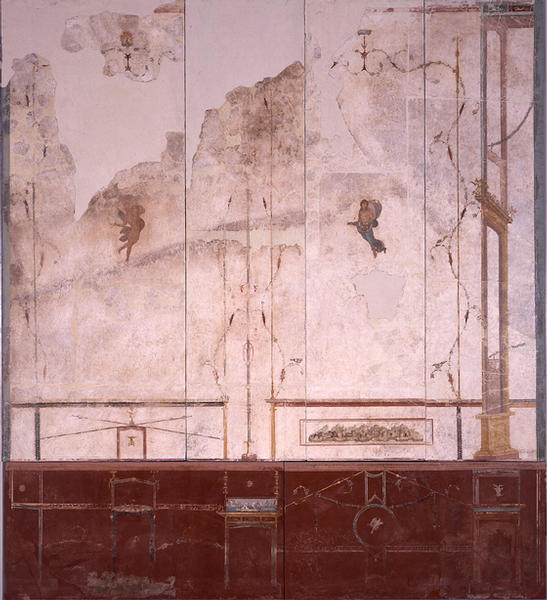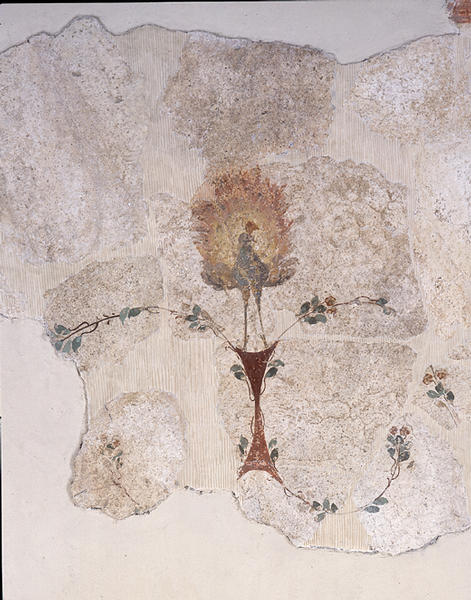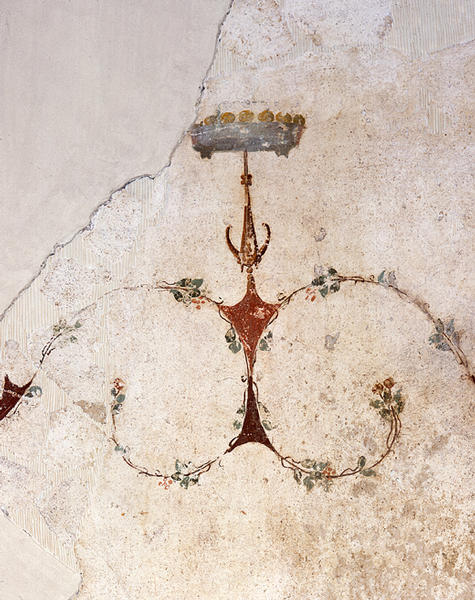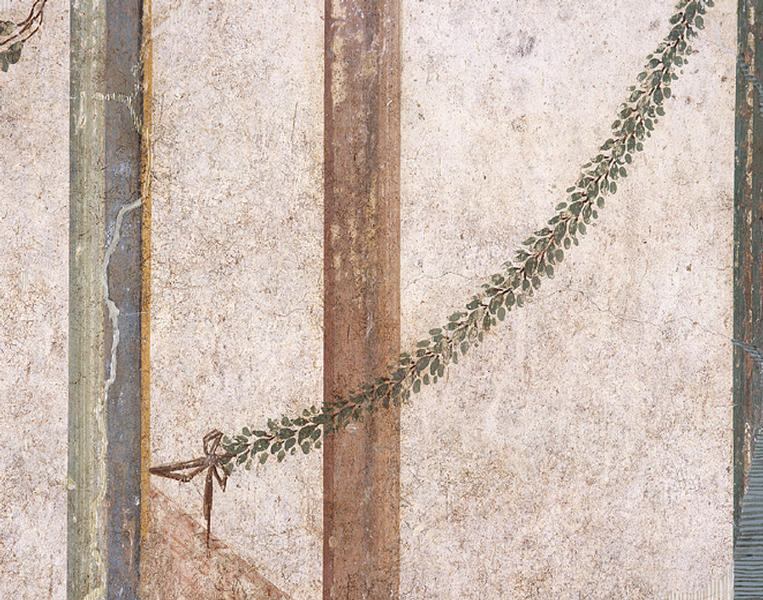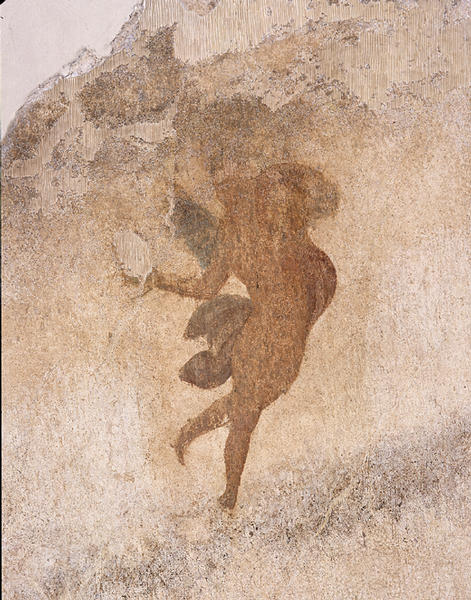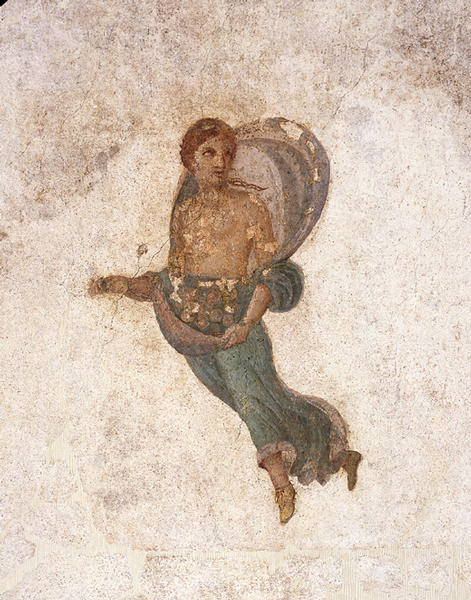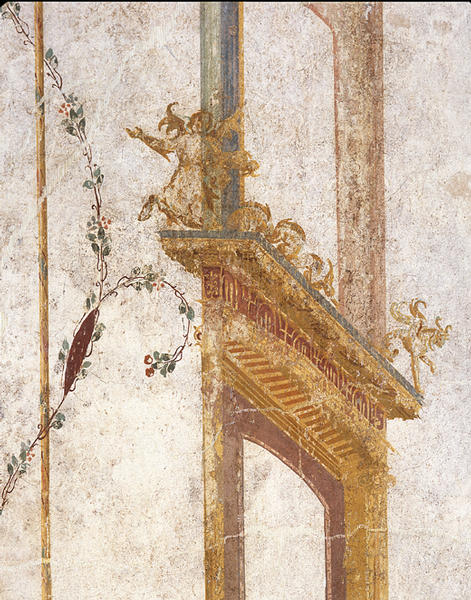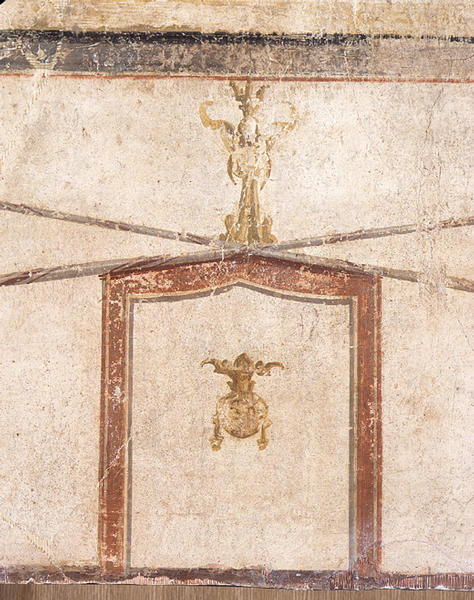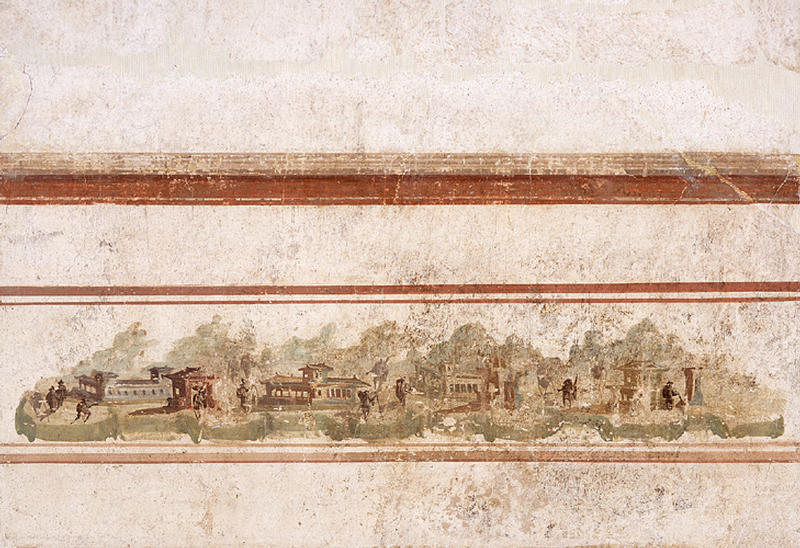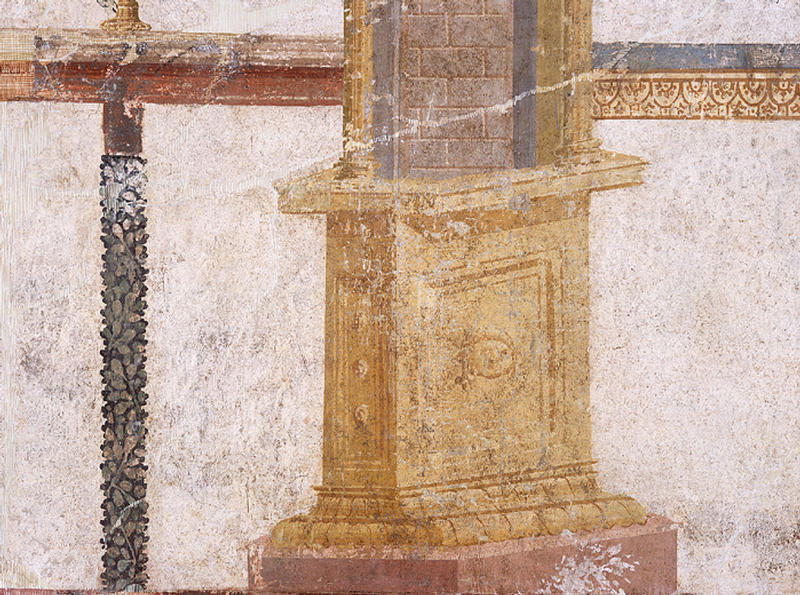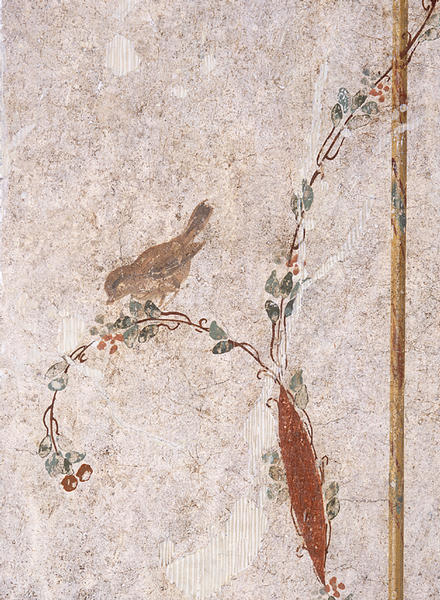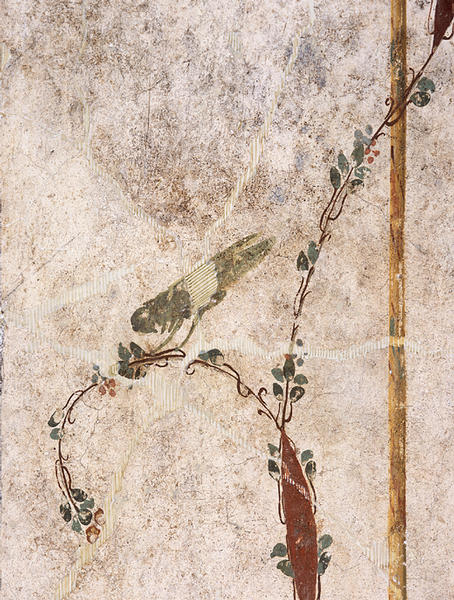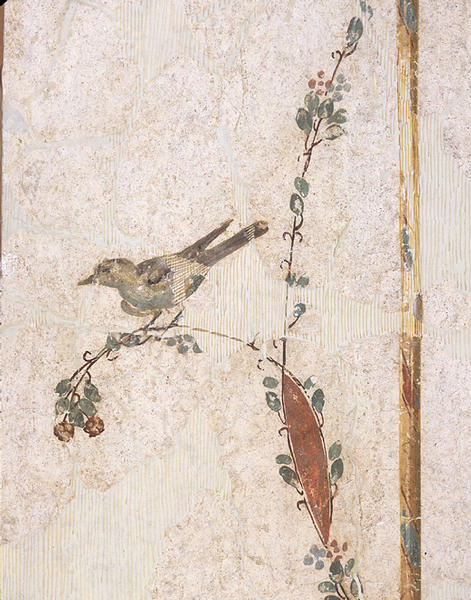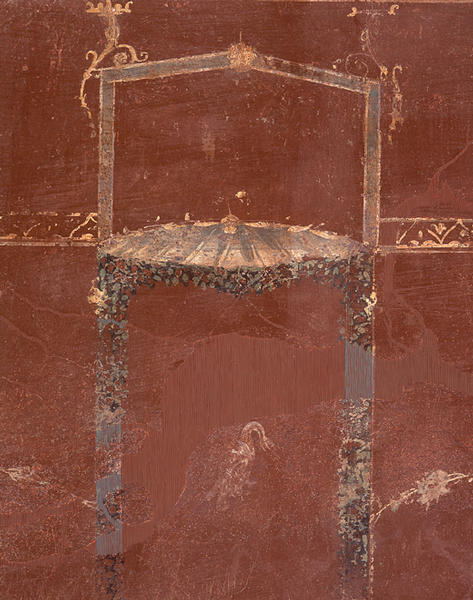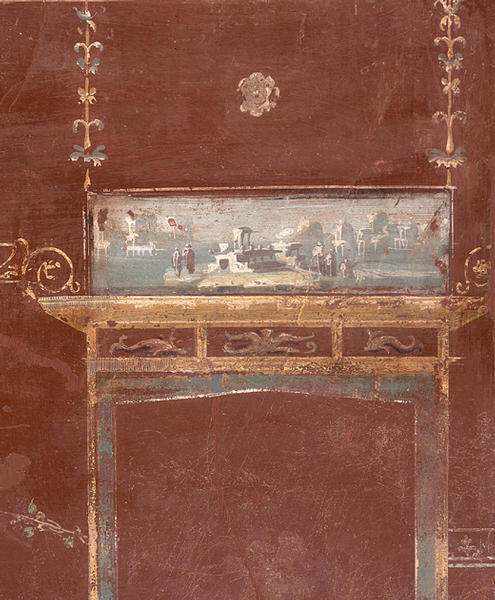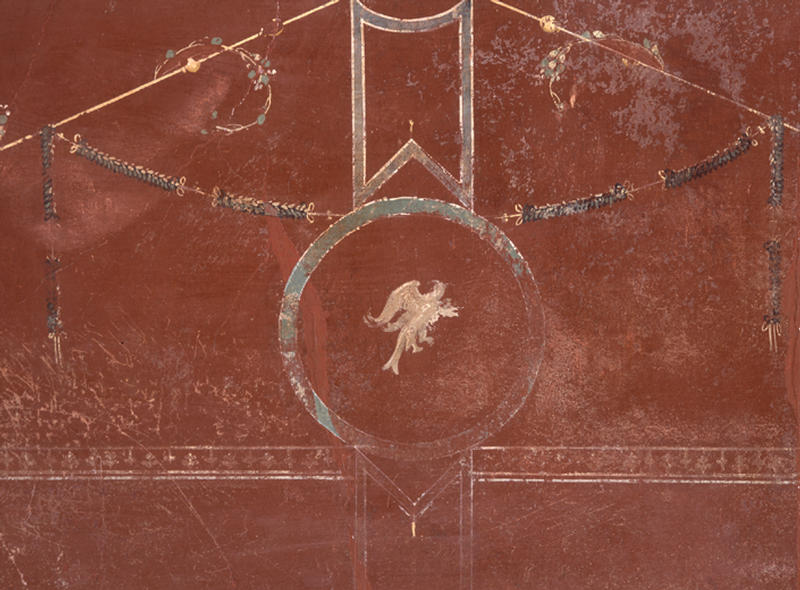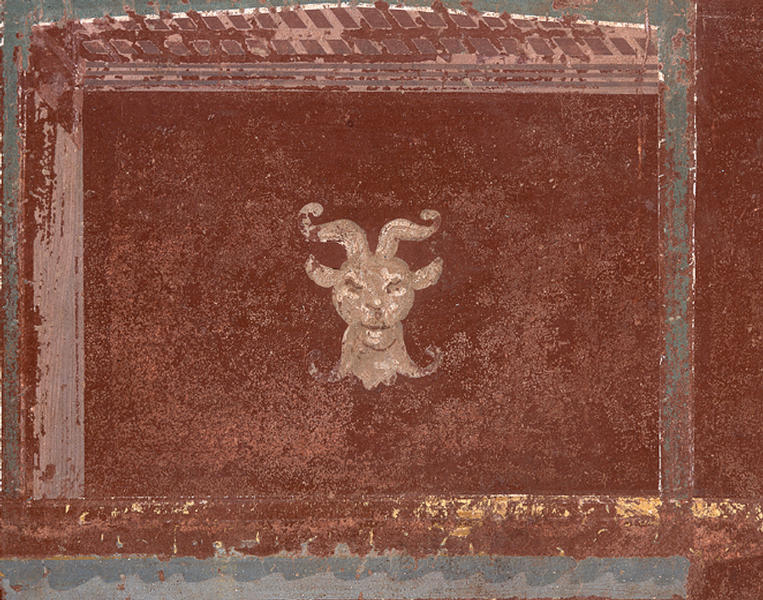季節の精(壁画)
- 1世紀
- フレスコ
- H-336 W-306
解説(古代バクトリア遺宝展)
1世紀
フレスコ
縦336.0 cm 横306.0 cm
建築の壁面を彩色して装飾することは古くから広く行われてきたが、前3世紀頃のヘレニズムの時代には壁面に高価な天然石を模した化粧張を描くことが行われていたと考えられている。ローマ時代にはこのような壁画が発展して、各々の部屋あるいは空間に豪華さや心地よい雰囲気(幻想)を作り出すため、その壁面に様々な様式の壁画が描かれた。本作品はその様式の中では一般に第Ⅳ様式とよばれているもので、壁面を建築的意匠で矩形に区切り、各々の空間には小さな形象が描かれている。画面は下段の腰羽目部とその上の壁面に大きく分かれているが、おそらくこの上に更にもう1段フリーズ部分があったと想像される。腰羽目部分は赤褐色に地塗りされ、小さな建築意匠に天蓋、セイレーン、山羊頭、そして枠取りをした風景画の小画面が組み合わされている。上の壁面は白く地塗りされ、中央には細い柱を描き、その両脇に建築意匠から立ち上がるテュルソス(ディオニュソスの杖)に波打つ蔦が絡まり、二つの縦長の枠を作っている。左の蔦枠の中央上部には孔雀がとまっている。各々の枠の中央には季節の精と思われる女性が浮遊しているが、右側は果実をそのローヴに満載して抱えている。下の建築意匠で囲まれた左右の横長の空間には、左にテュルソスを交差させた上にグリフィンが座る意匠、右には枠取りされた神域の風景画が描かれている。上部の画面の右端には上部フリーズに海馬とグリフィンをつけた建築意匠が遠近法で描かれているが、左部分の表現であることから、この壁画全体は一つの壁面の左部分であることが分かる。おそらくこの右には対称に構成された季節の精を主題とした壁画があったはずであり、この関連からここに描かれている右側の精は秋、左の精は冬に相当するものと考えられる。
Catalogue Entry(Bac#040)
1st century A.D.
Fresco
L. 336.0 cm, W. 306.0 cm
The use of bright pigments to decorate wall surfaces has long been widely used, and in the Hellenistic period, ca. the 3rd century BC, it is thought that decorative wall surfaces were created to imitate the use of expensive natural stone wall coverings. These frescos developed during the course of the Roman period and each room or space was fitted with frescos in various styles to create either luxurious or comfortable illusions in their inhabitants. This fresco is generally classed as a IV style of fresco. In this case the wall surface was divided into rectangular sections in an architectural manner, and then a small design was painted in each of those sections. The painting surface was divided into a large wainscoting area below and a wall surface above, and we can also imagine that there was then a further layer of frieze painted above these two areas. The small architectural units then had combinations of small paintings, whether canopies, sirens, mountain goat heads, or framed landscape scenes. The upper wall surface had a white ground painting, a narrow column was depicted in the center of the wall, and architectural elements on either side are the base for Thrysos (Dionysus's staff) from which extend waves of vining plants and form two vertical frames. The left vine frame has a peacock in its upper center. A female figure thought to represent the spirit of the seasons is depicted in the center of each of these frames, and on the right side the figure has her robe filled with fruit. The lower horizontal spaces surrounded by architectural motifs have a crossed thrysos motif in the left space, and a framed divine precinct landscape scene in the right space. The right corner of the upper area of the upper frieze has a perspectively rendered depiction of an architectural element with seahorse and griffin motifs. Judging from the depiction on the left section, however, we can see how this whole panel would have been the left section of an entire wall fresco. In other words, there was probably a corresponding right section which would have had similar seasonal spirit theme panels. Given this overall construct, we can consider that here the right panel shows the spirit of autumn, while the left panel shows the spirit of winter.
